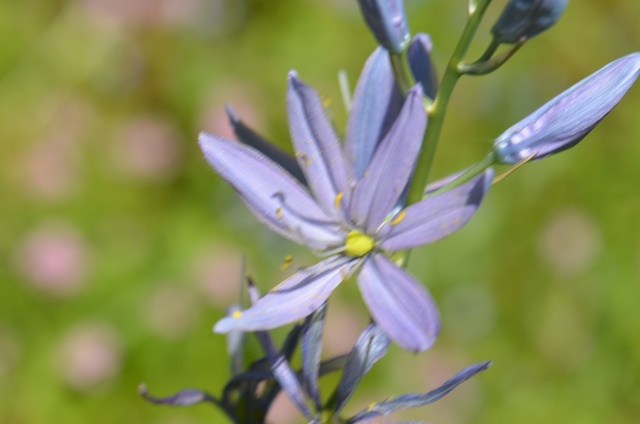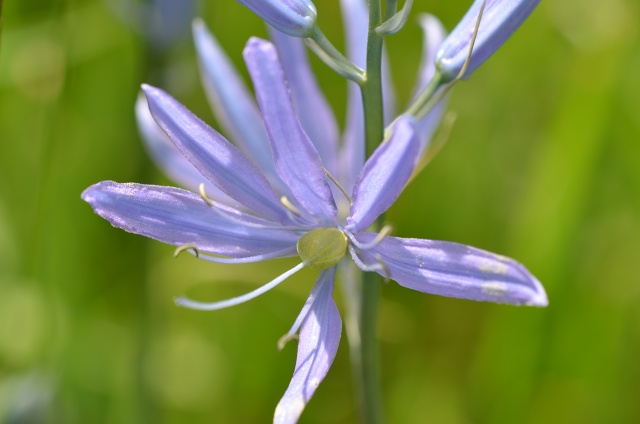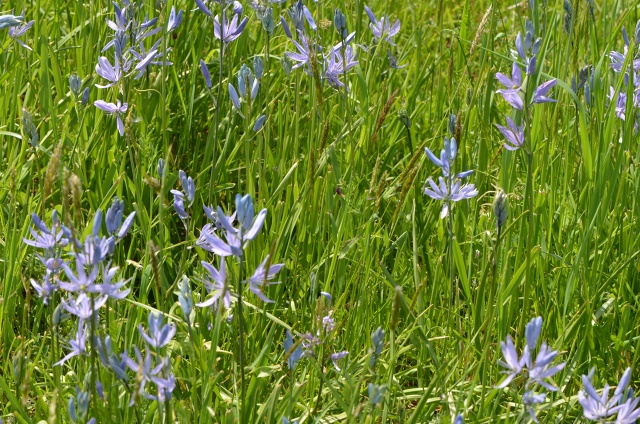Camas Lily
(Camassia)
Common Names: camas, quamash, Indian hyacinth, and wild hyacinth
Camassia species were an important food staple for Native Americans and settlers.
While Camassia species are edible and nutritious, the
white-flowered species that grow in the same areas are toxic. However,
and the bulbs are quite similar, hence, care is required in digging and eating the bulbs.
It is said that the Indians, marked the location of white flower, so that in the fall,
after the flowers where gone, they could avoid the bulbs of the white species.
The Camas bulbs were a food source for many native peoples
in the western United States and Canada.
After being harvested in the autumn,the bulbs were pit-roasted or boiled.
A pit-cooked camas bulb looks and tastes something like baked sweet potato,
but sweeter, and with more fibers.
When dried, the bulbs can be pounded into flour.
Native American tribes who ate camas include the Nez Perce,
Cree, Coast Salish, Lummi, and Blackfoot tribes.
According to their diaries, the Camas bulbs also helped
members of the Lewis and Clark Expedition survive the winter they spent in Oregon.





